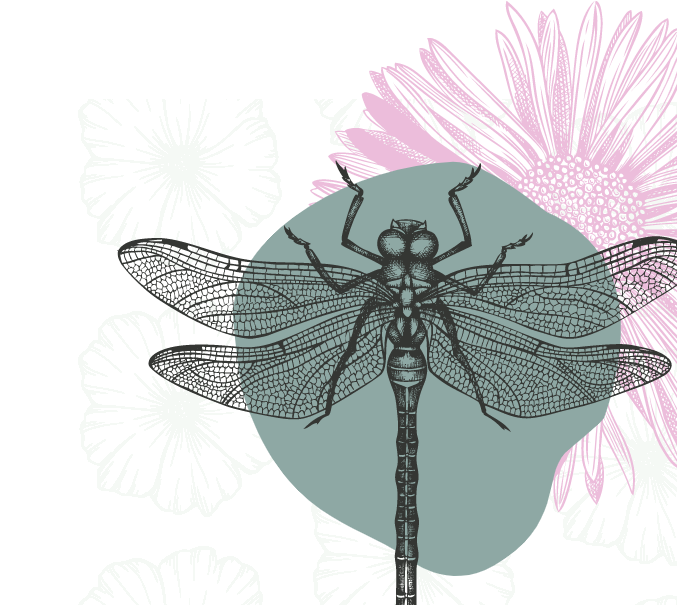Esta Barrett Manor and Gardens Timeline
Prehistoric to 1832
The land near the confluence of the Rock and Kishwaukee rivers has supported individuals, families, and distinct indigenous American cultures for thousands of years. Indigenous peoples traveled along the riverbanks to hunt, trade, interact with others, and bury their dead. Before European settlement, the Ho-Chunk, Potawatomie, and other tribes would navigate the waterways and encamp on the land until their forced removal after the Black Hawk War of 1832.
1839
The property where the manor house currently stands was purchased from the government in 1839 by early settlers to the region. The land changed hands several times before being owned and farmed by the Lewis family.
1915
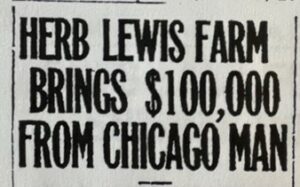
Chicago businessman Charles C. Barrett and his wife Esta spend $100,000 to purchase the Herb Lewis farm property, farm equipment, and livestock. Here they will build their country retreat and gentleman’s farm.
1917
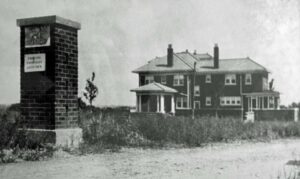
Rockford architect Charles W. Bradley designs a country home for Charles and Esta. Landscape gardener O. C. Simonds lays out the grounds and gardens. The estate is expected to be complete by April of 1917. The Barretts call it Indian Hill Manor.
1918
Charles Cook Barrett dies on October 6, 1918, at St. Luke’s Hospital in Chicago. His body is shipped to the place of his birth, Nantucket Island, for burial in Prospect Hill Cemetery.
1919
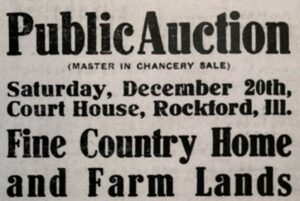
After a dispute over the will, Esta Barrett and Charles’ two brothers inherit the vast estate of land and investments. The entire property is divided into four parcels and sold at auction in 1919. Esta buys back three of the parcels, which include the manor and farm. She runs the property until her death.
1947
While wintering at her home in Miami, Florida, Esta and her son from her first marriage, Harry Reed, were traveling to a luncheon in Fort Lauderdale. Harry was driving when they collided with a truck in a head-on collision. Esta was thrown from the vehicle and killed. Harry inherits the bulk of Esta’s estate.
1969
After Harry’s death in 1969, Esta’s grandson, Chuck Reed, inherited the land and enrolled the farmland north of Kishwaukee Road into the federal Conservation Reserve Program, planted thousands of pines, walnuts, and other trees, and managed the property for maximum wildlife production. Chuck wanted his place to become a model farm for soil and wildlife conservation.
1971
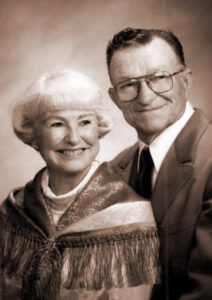
Chuck Reed sells the manor to William and Lucille Smeja, who were living in Elmhurst, IL, and looking for a place to move to the country. They lovingly care for the property until their deaths in 1997 and 2007, respectively.
1989
Chuck Reed donates the property north of Kishwaukee Road to the Natural Land Institute to preserve. Natural Land Institute holds the property until 1996 and then donates it to the Forest Preserves of Winnebago County to be named, Indian Hill Forest Preserve. Chuck Reed keeps the historic farm property on the south side of Kishwaukee Road throughout his life.
2001
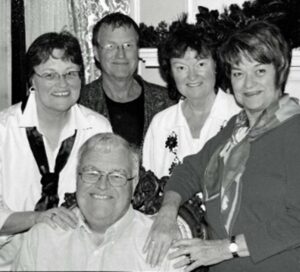
With Lucille, the five living Smeja children forms a private operating foundation to preserve the manor and grounds, promote historic preservation, and nominate the site to the National Register of Historic Places.
2010

The historic 160-acre Barrett Farm was acquired from Chuck Reed’s heir, reuniting the farm with the estate.
2024

The site is renamed Esta Barrett Manor & Gardens. The logo represents the welcoming entrance to the manor and one of O.C. Simonds’ favorite native plants, the pasture rose (Rosa carolina), that grows near the entrance to the manor.



